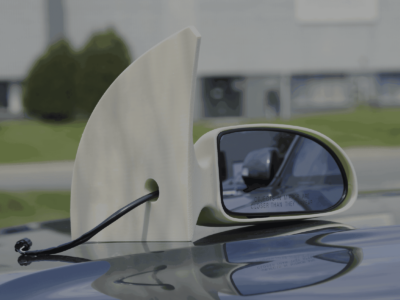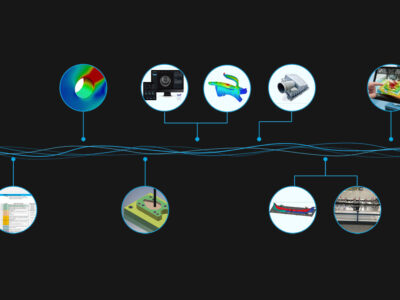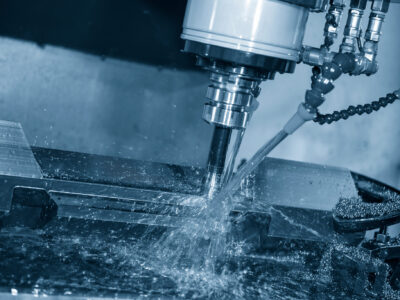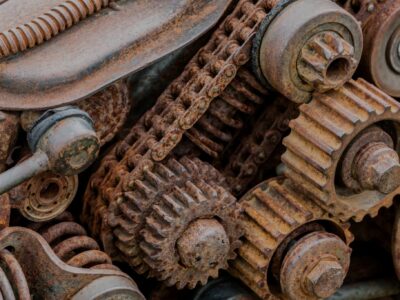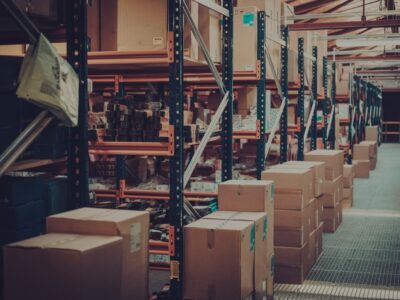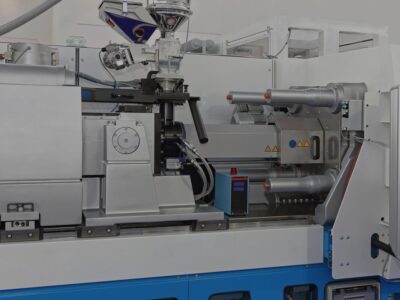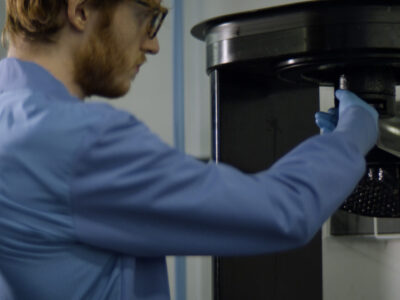Previously published on fastradius.com on September 17, 2020
ABS plastics are a family of common thermoplastic resins characterized by their high-impact strength, rigidity, and chemical resistance. Created by polymerizing a rubberlike toughener with styrene and acrylonitrile compounds, ABS plastics are relatively inexpensive to produce, easy to CNC machine or CNC mill, and excellent for injection molding. ABS plastics and related Acrylonitrile Styrene Acrylate (ASA) materials also have low melting points, which make them ideal for some additive manufacturing processes.
Fused deposition modeling (FDM) is one additive method that creates parts by extruding material through a heated nozzle one layer at a time until the piece is complete. FDM printers can manufacture larger parts than many other additive technologies, and allow manufacturers to create rapid, economical prototypes and end-use parts with a range of finishing options.
However, different ABS and ASA materials can be used to create FDM-printed components with a variety of physical and chemical characteristics, so it’s essential for product teams to let the needs of final application guide material selection.
Key Material Considerations for FDM Printing
When selecting an ABS thermoplastic, engineers should consider the final part’s application, function, appearance, and whether the materials need additional certification.
The piece’s application should be the primary driver for material selection. For instance, attempting to use soft, flexible materials to create components that need high strength and impact resistance will only undermine the functional effectiveness of the part.
Material choice should therefore align with the characteristics required of the part. How the part is expected to perform will also limit the pool of viable materials. Parts that must be flame-retardant, UV-resistant, flexible, or that provide electrical insulation will each raise a specific set of considerations when choosing materials.
Some ABS plastics can be FDM printed in full CMYK color with high resolution and impressive cosmetic finishes, while others will require additional polishing or post-production. These additional costs aren’t necessarily prohibitive, but should be kept in mind when selecting a production material.
Finally, depending on part application, materials may need to be certified for biocompatibility, chemical resistance, sterilization capability, toxicity, or other factors, either by the FDA or other industry-specific organizations.
Here are some of the most common ABS and ASA materials used for FDM. Please note that the following metrics are based on Stratasys materials, and there can be small variations between suppliers.
PC-ABS

This combination of polycarbonate (PC) and ABS thermoplastics is tough, durable, and heat-resistant, while also offering good flexural strength. PC-ABS is extremely useful when manufacturing industrial equipment and prototyping power tools. The following metrics are for the XZ plane, unless otherwise noted.
- Heat deflection temperature @ 66 psi: 257°F (125°C)
- Yield strength: 36 MPa (5,300 psi)
- Elongation @ yield: 3.01%
- Strength @ break (ZX orientation): 34 MPa (5,070 psi)
- Elongation @ break: 4.7%
- Tensile modulus: 1.98 GPa (270 ksi)
- Flexural modulus: 1.9 GPa (270 ksi)
- Impact strength: 249 J/m notched (655 J/m unnotched)
ABS-ESD7

This thermoplastic has static dissipative properties that make it ideal for applications where sensitivity to static discharge is a concern, including tooling used to assemble electronics, packaging, and enclosures.
- Heat deflection temperature @ 66 psi: 221°F (105°C)
- Yield strength: 35 MPa (5,130 psi)
- Elongation @ yield: 2.06%
- Strength @ break (ZX orientation): 35 MPa (4,920 psi)
- Elongation @ break: 3.4%
- Tensile modulus: 2.7 GPa (390 ksi)
- Flexural modulus: 2.4 GPa (350 ksi)
- Impact strength: 35 J/m notched (200 J/m unnotched)
ABS-M30

ABS-M30 offers stronger layer bonding than standard ABS, which gives this material significantly greater strength. It’s an excellent material for functional prototypes, tooling, and end-use parts.
- Heat deflection temperature @ 66 psi: 220 °F (104°C)
- Yield strength: 30 MPa (4,470 psi)
- Elongation @ yield: 8.06%
- Strength @ break (ZX orientation): 35 MPa (4,920 psi)
- Elongation @ break: 3.4%
- Tensile modulus: 2.4 GPa (320 ksi)
- Flexural modulus: 2.22 GPa (320 ksi)
- Impact strength: 100 J/m notched (290 J/m unnotched)
ABS-M30i

This high-strength material is similar to ABS M30, with the additional benefit of being biocompatible. The material can also be sterilized, making it well suited for FDM-printed components that come in contact with food, medications, or skin.
- Heat deflection temperature @ 66 psi: 204°F (96°C)
- Yield strength: 331 MPa (48,007 psi)
- Elongation @ break: 4%
- Tensile strength: 36 MPa (4,650 psi)
- Tensile modulus: 2,400 MPa (350,000 psi)
- Flexural strength: 61 MPa (8,800 psi)
- Flexural modulus: 2,300 MPa (336,000 psi)
- Impact strength: 139 J/m notched (283 J/m unnotched)
ASA

ASA is similar to ABS but offers superior UV resistance, which is why it’s commonly used for parts exposed to the elements and for infrastructural applications.
- Heat deflection temperature @ 66 psi: 216°F (102°C)
- Yield strength: 33 MPa (4750 psi)
- Elongation @ yield: 2.52%
- Strength @ break (ZX orientation): 30 MPa (4630 psi)
- Elongation @ break: 5.9%
- Tensile modulus: 2.14 GPa (310 ksi)
- Flexural modulus: 1.97 GPa (285 ksi)
- Impact strength: 45 J/m notched (285 J/m unnotched)
Why ABS/ASA?
ABS and ASA resins are strong, durable, and abrasion-resistant, making them well-suited for a wide range of part applications, such as protective housings, consumer packaged goods, and other objects that need to stand up to wear and tear. ABS plastics also demonstrate good electrical insulation and high dimensional stability, meaning that they do not mechanically degrade over time. Additionally, ABA and ASA resins are cost-effective to manufacture, making them widely accessible to product teams with budgets of all sizes.
It’s worth noting that ABS resins are known to become brittle after long exposure to sunlight. However, as mentioned above, ASA plastics provide far better UV and weather resistance.
Getting Started With ABS/ASA
ABS and ASA resins are a versatile group of thermoplastic materials known for their high strength, stiffness, and impact resistance — characteristics that make them ideal for many applications that require durability. Because the ABS family offers a range of different physical and chemical properties, choosing the material best-suited for a given application is key to ensuring the success and effectiveness of the part.
Partnering with an experienced manufacturer like SyBridge can simplify more than just the material selection process. Our team of engineers and designers are standing by to optimize part designs, which allows us to pass time and cost savings onto our customers without any loss in product quality. We provide end-to-end advisory and product development services to all of our customers, ensuring that not only are products optimized for manufacturability, functionality, and aesthetics, but produced quickly and affordably. Contact us today to start an order.
